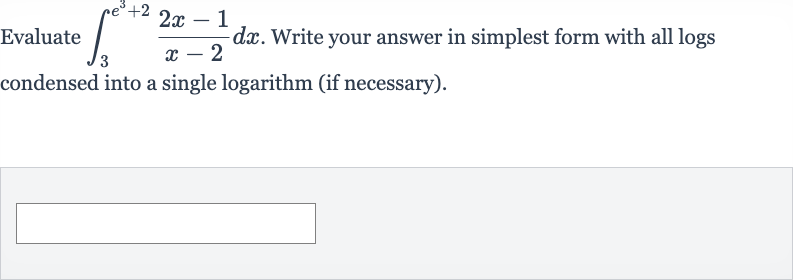Full solution
Q. Evaluate . Write your answer in simplest form with all logs condensed into a single logarithm (if necessary).
- Identify Integral Type: Identify the type of integral. We are dealing with an integral of a rational function, which suggests that we might need to use partial fraction decomposition. However, in this case, the numerator is a first-degree polynomial and the denominator is a first-degree polynomial as well, but not factorable. We can simplify the integral by dividing the numerator by the denominator.
- Perform Long Division: Perform long division for the integrand . When we divide by , we get . Multiplying by gives us . Subtracting this from gives us a remainder of . So, the integral can be rewritten as: from to .
- Split into Two Integrals: Split the integral into two separate integrals. . We can now integrate each term separately.
- Integrate Constant Term: Integrate the first term . The integral of a constant is just the constant times the variable, so: .
- Integrate Fraction Term: Integrate the second term . The integral of is , so: .
- Combine Integral Results: Combine the results of the two integrals.The combined integral is:.
- Evaluate Definite Integral: Evaluate the definite integral from to . We substitute the upper and lower limits into the antiderivative: .
- Simplify Expression: Simplify the expression. simplifies to:.Since and , the expression further simplifies to:.
- Combine Like Terms: Combine like terms to get the final answer. simplifies to:.

